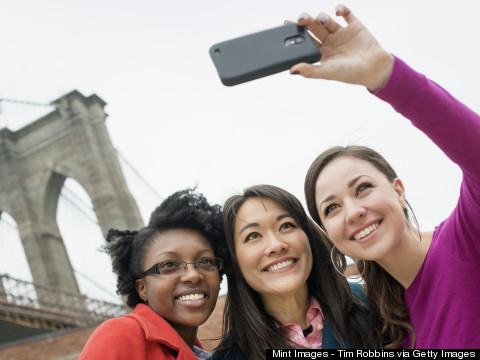
Smartphones are everywhere. Take a look around -- people are texting, reading, writing emails and taking photos. It happens on the subway, on the streets during rush hour and in cultural institutions. Everyone wants to snap a photo by Starry Night, the Temple of Dendur, the Infinity Room. A recent study by Psychological Science claims that this behavior hinders your memory in a museum setting. But is that memory there in the first place?
The average museum-goer cruises around the museum, looking for the highlights: specific pieces the museum heralds as "must-see" when visiting the institution. Visitors look for these pieces, either on their own, or on a tour specifically geared towards these pieces. They come, they see, they snap, they leave.
This is much like the study psychological scientist Linda Henkel of Fairfield University created to establish her point. Henkel recruited a group of undergraduate students and gave them a list of objects to see on a tour of the museum. The students could photograph the works or simply look at them, and their memory was tested the next day. Sure enough, the study showed people that just took a photo of objects had a harder time remembering details than the people that just looked at the object.
The release of this study led to a large amount of people decrying the use of technology and photos in museums. But how much do people remember just cruising around a museum, looking for highlights on their own?
We are all guilty of walking into a museum, trying to see everything, recording what we find interesting at that moment. We snap our photos, Instagram those highlights, leave and remember nothing. But before smartphones and inkwell filters, did we really stop to look in the first place?
I hate going to museums with certain friends. Too often, they head right to the label, take in the dosage of information and walk away. Even worse, they try to see EVERY SINGLE PIECE OF ART and leave tired and cranky a few hours later. Phones or not, people tend not to connect with art.
We need to connect with objects on a deeper level to get anything out of a museum experience. This idea of respect, just because an object is in a museum, needs to stop. Question why something is there -- and make a decision if you like it or not. It's ok to not like something, as long as you know why. Conversely, it's fine to think something is beautiful -- but go deeper and ask what makes it beautiful. Have a conversation with your friends, whether it is through a live-tweet of your museum experience (hashtag #ITweetMuseums or #museum or #art -- people will respond) or look up the object on Wiki. Find a way to experience the work more than just as something hanging on the wall.
Walking around a museum, phone or not, and hoping something just strikes you as a masterpiece, is like sitting around expecting someone to hand you a check for a million dollars or meeting your soulmate in the rain -- people scoff at both of those expectations, then do the museum equivalent. Going on a highlights tour of a museum without fully engaging is the same -- someone is telling you why these things are important, but if you don't care, you won't remember.
That's not to say all tours are bad -- tours that get participants actively involved will increase the likelihood that the art is more than a distant memory. But a tour that asks people to look at specific works of art without interaction is no better than walking around recording everything on Instagram. We remember experiences, not white noise background.
And this experience can be done with photos. Try taking the position of people in the work -- before you laugh, this was an actual art form called Tableaux Vivant, also known as a living picture. Snap a selfie or a photo in that position and think of what the people or person might say, both in the time it was done or in modern day. Get your group in on it and act it out. Make it come to life.
Zoom in on a specific area of an artwork and take a photo. Send it to a friend with a comment -- a tiny detail can reveal a huge joke -- or become a moment within a group. And it will be remembered because you made it more than something in a frame on the wall.
Photos are not ruining a museum experience -- for many people, that experience had already been ruined. Flying through a museum looking for highlights like a scavenger hunt isn't helping anyone remember anything. So snap that selfie, take that photo, add that filter -- just do it with a purpose.